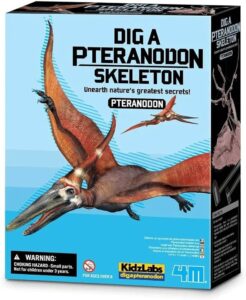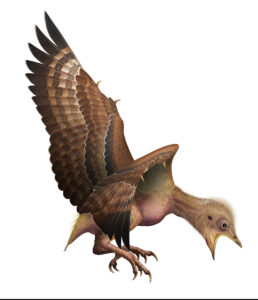What Is Dinosaur Bone Jewelry
Dinosaur bone jewelry, the bridge between ancient behemoths and modern fashion, encapsulates a unique blend of history and style. This intriguing art form involves crafting pieces from fossilized bones that have withstood the test of time.
While the origins of this practice are as layered as the Earth itself, the process from excavation to the final product raises questions about sustainability and ethics. As one explores the fascinating journey from prehistoric times to contemporary accessory boxes, the conversation naturally shifts towards the science of fossilization and the creative minds behind these designs.
However, the allure of wearing a piece of history comes with its own set of considerations, leaving us to ponder the balance between aesthetic appeal and the preservation of our planet's past.
Key Takeaways
- Dinosaur bone jewelry immortalizes ancient creatures through wearable art, appealing due to its rarity and connection to prehistoric life.
- The creation process involves selecting, cutting, and polishing fossilized bones, transforming them into unique pieces with precise craftsmanship.
- Types of bones used vary in rarity and value, with those from the Theropoda group often preferred for their dense structure and aesthetic appeal.
- Ethical sourcing and care in preservation are crucial, with future trends pointing towards increased demand and advancements in ethical and technological approaches.
Origins of Dinosaur Bone Jewelry
The genesis of dinosaur bone jewelry traces back to the fascination with these prehistoric creatures and the desire to immortalize their legacy through wearable art. This niche within the jewelry industry emerged as enthusiasts sought tangible connections to the Earth's ancient history, blending aesthetic appeal with paleontological intrigue.
Craftsmen recognized the potential in using fossilized dinosaur bones, remnants of creatures that roamed the Earth millions of years ago, as unique materials for creating jewelry. This innovative approach not only honored the majesty of dinosaurs but also introduced a novel means of appreciating natural history.
The rarity and distinctiveness of dinosaur bones, with their varied textures and colors, have made them highly sought-after by collectors and fashion enthusiasts alike, elevating dinosaur bone jewelry to a symbol of both scientific curiosity and artistic expression.
How It's Made
How do craftsmen transform ancient dinosaur bones into exquisite pieces of jewelry? The process is meticulous and requires a deep understanding of both paleontology and craftsmanship.
- Selection and Preparation: Artisans carefully select well-preserved dinosaur bone fragments. These are then cleaned and prepared, ensuring any fragile areas are stabilized.
- Cutting and Shaping: Using precision tools, the bone is cut into the desired shape. This step requires a steady hand and a keen eye for detail, as the material's unique structure must be preserved.
- Polishing and Finishing: The final step involves polishing the bone to bring out its natural luster and coloration. This enhances the piece's visual appeal, making it ready for incorporation into jewelry settings.
Craftsmen adeptly navigate these steps, transforming ancient remains into captivating jewelry, marrying the realms of ancient history and modern fashion.
The Science Behind Fossilization
Understanding fossilization is crucial in appreciating how dinosaur bones survive millions of years to be transformed into jewelry. This complex process begins when an organism dies and is quickly buried under sediment. Over time, the organic materials within the bone decompose, and minerals infiltrate the porous structure. These minerals crystallize, replacing the organic material, yet preserving the bone's original shape and structure.
This mineralization creates a fossil, which is essentially a stone replica of the original bone. The conditions under which fossilization occurs are specific and rare, requiring rapid burial to prevent decay, and a perfect balance of minerals to facilitate the replacement process. This intricate transformation from bone to fossil is what makes dinosaur bone jewelry not only possible but remarkably unique.
Types of Dinosaur Bones Used
In the realm of dinosaur bone jewelry, the selection of fossilized bones is critical, as it directly influences both aesthetic appeal and item value. Experts meticulously assess these ancient remains for rarity, which often correlates with the unique patterns and hues that define the final product's desirability.
Consequently, the value of dinosaur bone jewelry isn't merely monetary but also historical, encapsulating millions of years of Earth's history within each piece.
Fossilized Bone Selection
Selecting fossilized dinosaur bones for jewelry involves a meticulous process, focusing on species such as Tyrannosaurus rex and Triceratops due to their notable durability and aesthetic appeal. These bones undergo rigorous evaluation to ensure they meet the high standards required for crafting exquisite jewelry pieces.
The selection criteria are comprehensive, involving:
- Structural Integrity: Only bones that have preserved their structural integrity through the fossilization process are considered. This ensures the material's durability and suitability for fine jewelry.
- Color and Pattern: The unique coloration and patterning of the bone material, which varies from piece to piece, are crucial for its aesthetic value.
- Rarity: While not delving into the specifics of rarity and value, bones from less common dinosaurs are selectively chosen for their unique appeal, without compromising on quality and appearance.
Rarity and Value
The rarity and value of dinosaur bones, integral to the allure of fossilized jewelry, significantly influence the types of bones chosen for such exclusive creations. Artisans and collectors prize certain specimens for their unique colors, patterns, and the preservation state, which directly impacts their scarcity and worth.
Not all dinosaur remains possess the qualities necessary for transformation into jewelry. Thus, the selection process is meticulous, prioritizing bones that offer both aesthetic beauty and durability. Among these, bones from the Theropoda group, known for their dense structure, are often sought after. This preference not only reflects the desire for physical beauty but also ensures the piece's longevity, making it a cherished, valuable artifact.
The intersection of rarity and aesthetic appeal dictates the ultimate choice, underlining the intricate relationship between paleontological significance and artisanal value.
Designing Dinosaur Bone Jewelry
Crafting dinosaur bone jewelry requires a meticulous selection process, wherein the integrity and aesthetic appeal of the fossilized materials are paramount. Designers often face the challenge of balancing the preservation of these ancient artifacts with the creation of visually stunning pieces. This synthesis of history and artistry involves several critical steps:
- Material Selection: Only the highest quality bones, which are well-preserved and possess unique color patterns, are chosen.
- Design Conceptualization: Artists meticulously plan the design, considering how to enhance the natural beauty of the bone without overshadowing its historical significance.
- Craftsmanship: Utilizing advanced techniques and tools, craftsmen delicately shape and polish the bone, ensuring that the final product honors its ancient origin while offering a modern allure.
This process underscores the deep respect and admiration designers hold for these prehistoric treasures.
Symbolism and Significance
Beyond the meticulous craftsmanship involved in creating dinosaur bone jewelry, the symbolism and significance imbued in these pieces evoke a profound connection to Earth's ancient past. Wearing these artifacts represents not only a fascination with prehistoric life but also an acknowledgment of the transient nature of existence.
The rarity and uniqueness of dinosaur bones, transformed into wearable art, signify a bridge between the temporal and the eternal, blending modern aesthetics with the remnants of bygone eras. This fusion embodies a reverence for the natural world and its evolutionary marvels, serving as a tangible reminder of the Earth's vast history and the cyclical patterns of life and extinction.
Thus, dinosaur bone jewelry transcends mere adornment, offering a profound emblem of time's passage and humanity's place within the broader tapestry of life.
Caring for Your Jewelry
Maintaining the integrity and appearance of dinosaur bone jewelry necessitates a meticulous approach to its care and preservation. This unique form of adornment, comprised of petrified remains, demands specific handling to ensure its longevity and luster.
To effectively safeguard these ancient treasures, one must adhere to the following guidelines:
- Avoid Chemical Exposures: Harsh chemicals can erode the fossilized material, diminishing its intricate patterns and vibrant hues.
- Gentle Cleaning: Utilize a soft, dry cloth for routine dusting. For deeper cleans, opt for mildly soapy water, ensuring the piece is thoroughly dried afterward.
- Proper Storage: Store separately in a soft-lined box to prevent scratches and damage from harder substances.
Adhering to these practices guarantees the enduring beauty and structural integrity of dinosaur bone jewelry, allowing it to be cherished across generations.
Ethical Considerations
Exploring the ethical considerations surrounding dinosaur bone jewelry reveals a complex landscape of cultural, environmental, and legal implications. The primary concern lies in the potential desecration of paleontological sites, which are invaluable to scientific research and heritage preservation. Critics argue that extracting dinosaur bones for commercial purposes undermines efforts to study Earth's biological and geological past.
Moreover, there's an ongoing debate about the legality of sourcing these materials, as regulations vary significantly across jurisdictions. Some countries have stringent laws protecting fossil sites, whereas others lack clear guidelines, raising questions about the legitimacy of the trade.
Environmentalists also highlight the ecological footprint of mining operations, emphasizing the need for sustainable practices. Collectively, these issues underscore the importance of ethical sourcing and the preservation of natural history for future generations.
Where to Find Genuine Pieces
Finding genuine dinosaur bone jewelry requires navigating a market rife with both authentic artifacts and convincing forgeries. Discerning collectors and enthusiasts must employ a meticulous approach to ensure the authenticity of their acquisitions. To aid in this endeavor, consider the following sources known for their credibility:
- Reputable Specialty Stores: These establishments often have direct connections to paleontologists and can provide provenance for their pieces.
- Certified Online Marketplaces: Platforms that specialize in fossils and prehistoric artifacts, which vet their sellers and items.
- Auctions by Renowned Houses: Auctions that specialize in natural history may offer rare and authenticated pieces, complete with documentation.
These avenues offer a more secure path to obtaining genuine dinosaur bone jewelry, safeguarding collectors against the prevalent risk of counterfeit items.
Future Trends in Dinosaur Jewelry
As the fascination with prehistoric life continues to captivate the public's imagination, the market for dinosaur bone jewelry is poised for significant evolution and expansion in the coming years. Analysts predict a surge in demand for these ancient relics, prompting jewelers to innovate in their sourcing, design, and marketing strategies.
Ethical sourcing will become paramount, with a focus on ensuring that all materials are acquired responsibly, preserving archaeological integrity. Advancements in technology will enable more precise and less invasive methods of extracting and preparing dinosaur bones for jewelry, ensuring the preservation of these precious artifacts.
Furthermore, customization will play a crucial role, as consumers seek unique pieces that offer a personal connection to the ancient past. The intersection of technology, ethics, and personalization will define the future trajectory of dinosaur bone jewelry, making it more accessible, sustainable, and meaningful for enthusiasts worldwide.
Conclusion
In conclusion, dinosaur bone jewelry represents a unique synthesis of ancient worlds and modern craftsmanship, akin to weaving threads from two vastly different tapestries into a single, intricate design. Its creation involves a nuanced understanding of fossilization and ethical sourcing, while its care demands specific knowledge to preserve its integrity.
As this niche market evolves, it's imperative for both creators and consumers to navigate these ethical waters carefully, ensuring the legacy of these prehistoric giants is honored in every piece crafted.




